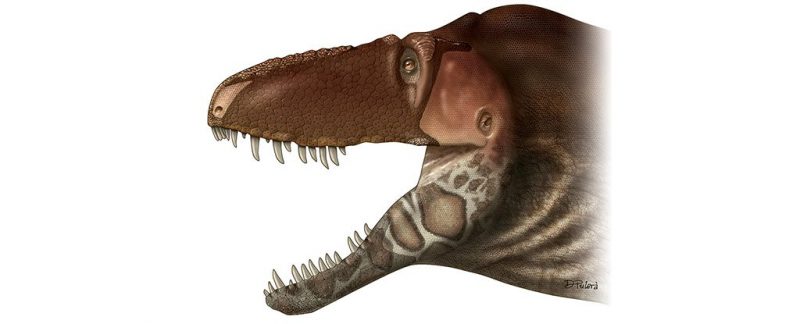Tyrannosaurs. Big. Mighty. Terrifying.
Sensitive?
Believe it or not, this may be true. To be clear, this doesn't mean that tyrannosaurs weren't the ferocious predators that we've been told they were. However, new fossil evidence suggests that they had a face that was far more complex—and sensitive—than the fearsome version we're so used to imagining.
Tough, yet touchy
This new fossil is of a smaller relative of the T. rex. (Getty Embed)
Though we're all familiar with the towering T. rex, it was just the largest member of an entire family of meat-eating dinosaurs. The fossil we're writing about here belongs to a newly discovered type of tyrannosaur called Daspletosaurus horneri. This dino was likely around 9 metres (29.5 feet) long and 2.2 metres (7.2 feet) tall. Tyrannosaurus rex was 12.3 metres (40 feet) long and 4 metres (13 feet) tall.
Daspletosaurus horneri had big, flat scales on its face. These scales were likely very sensitive, similar to those on the snout of modern crocodiles. Scientists guess that these sensitive areas on the tyrannosaur's face would've been useful when handling prey in the dark, burying and digging up eggs, and nuzzling young. It also had small horns in front of its eyes, and patches of thick skin around its mouth. All of this information went into the illustration that you see at the top of this post.
Leaving a mark
Crocodiles use their sensitive snout to dig up their buried eggs when its time for them to hatch. Could these tyrannosaurs have done the same with their own young? (Getty Embed)
Just how can scientists make such claims about the exterior of an animal when they're only able to see the bones underneath? Soft tissue (a.k.a. an animal's skin, scales, muscles, tendons, and nerves) leave behind impressions, or markings, on the bones. In this case, the fossil was so well preserved that paleontologists were able to read these impressions. They are quite similar to those found on crocodiles today. This means that tyrannosaurs probably had many of the same abilities and behaviours as crocs do! Researchers also compared the fossils with living birds and other reptiles. It took years of work, but the end result is pretty impressive.
Pleased to meet you, Daspletosaurus horneri. It's almost as though you never left!
 Say hi to Daspletosaurus horneri, a tyrannosaur that lived in what is now Montana and Alberta during the late Cretaceous period. (Dino Pulerá)
Say hi to Daspletosaurus horneri, a tyrannosaur that lived in what is now Montana and Alberta during the late Cretaceous period. (Dino Pulerá)









